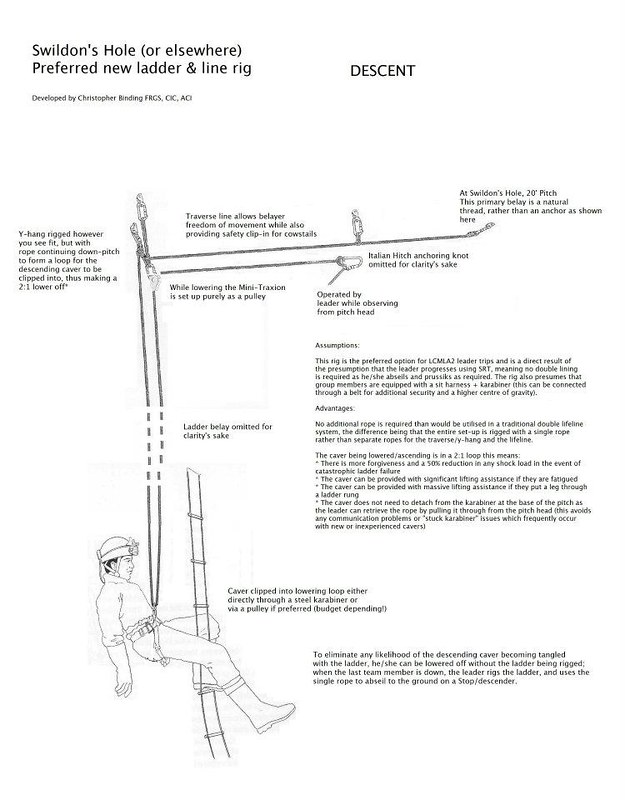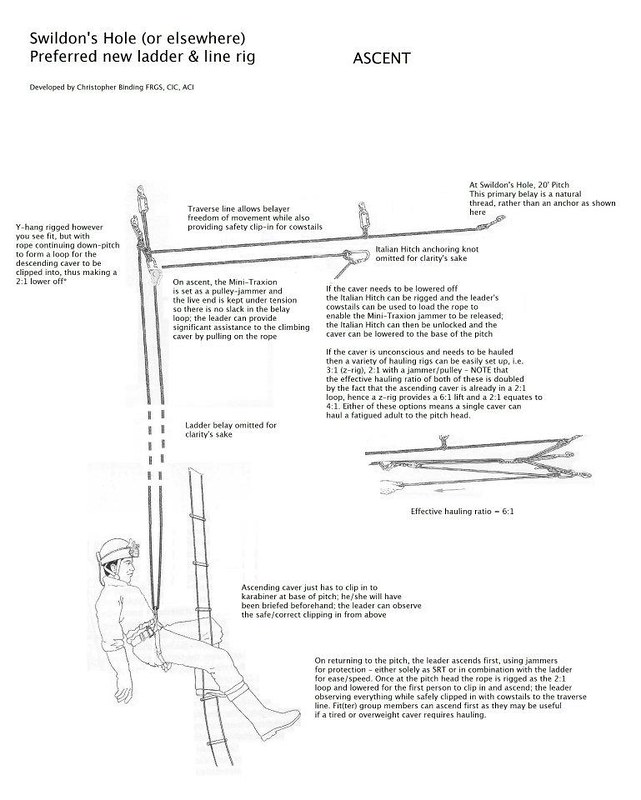I started caving before SRT caught on in Britain, so we all climbed ladders; many (perhaps most?) cavers would climb short ladders without a lifeline ? I know I certainly did.
I remember one day I was out wandering round Ingleborough with a pal and we came across a ?new? hole ? ?Hmm, that must be that new discovery . . . what was it, Tatham something or other??. So we set off down to have a look. When we reached the first pitch there was a ladder and line in place, so we continued the descent. When we reached the second pitch, there was a ladder with no line, so we went down that as well. Shortly afterwards we heard voices approaching, and decided to get out. We both got up the second pitch with no problem, but on the first pitch I got into a real mess on account of having started to climb on the wrong side of the ladder, as a result of which near the top I got squashed between the ladder and the wall, and had to somehow get round onto the other side of the ladder (which is easier said than done). During the course of my manoeuvrings I managed to insert my foot up to the knee between rungs, and even years later I can remember thinking ?It?s a good job this didn?t happen on the other pitch ? at least I?ve got a line here?. I think that I just let go, and dangled there (on a wait belt) while I got my foot out of the rungs.
Nevertheless, I still continued to climb (short) pitches on occasion without a line, but what stopped me was meeting a guy in a wheelchair at a caving conference, and when I asked him what happened he told me that he?d fallen down the Valley Entrance Pitch when the ladder broke. He was about half-way up so he ?only? felI a few feet ? but ?I?ve not walked since?, he said. That?s when I stopped climbing ladders without a line.
A close scrutiny of the CRO statistics revealed that up until about the mid-1980s, the ?type? accident they dealt with in the Dales was falls, most of them being people who fell off ladders through not using a lifeline ? or not using one properly; since then, falls have given way to floods as the most common type of call-out in the Dales, as ladders have been superseded by SRT.





